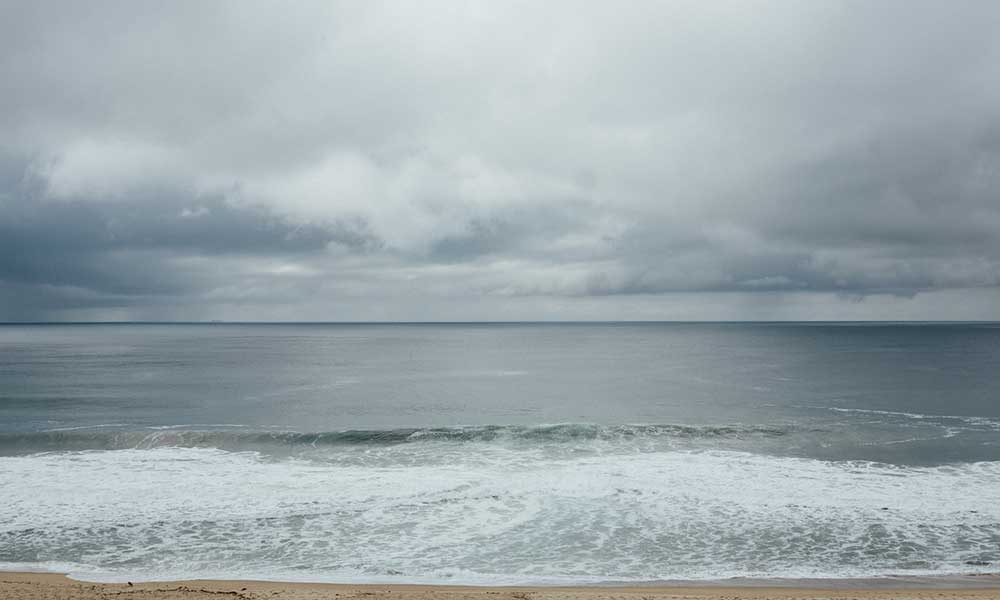June Gloom actually begins in May in San Diego and ends in August, or as San Diego local call it “Fogust”.
Why is it gloomy in San Diego? How long will the gloom last? And will June Gloom continues? All good questions. We were wondering, too. Here’s what we found out.
Why is San Diego so gloomy?
If you’ve spent any time in the San Diego, California, or if you live there now, you’re more than likely familiar with the May Gray and June Gloom that you’ll experience each year.
What does this mean? Here’s what you need to know about May Gray and June Gloom in San Diego.
What is May Gray in San Diego?
Across Southern California, it hits like clockwork. Every year, May skies are covered with low-level clouds which keep Californians cool in the late spring.
What Causes May Gray?
The marine layer is largely responsible for the gloomy skies experienced during May Gray.
The marine layer is a layer of air that forms at the surface of the ocean. In this aerated region, the dew point and the water temperature are very similar. The result is the clouds that are the cause of May Gray.
If you’re a San Diego local, you may have noticed the May Gray becoming less and less apparent in recent years.
There Are Two Reasons For May Gray In San Diego Is Lessening
First, the temperature of the ocean is rising. The dew point and the water temperature must be quite close in order for May Gray effect to take place. With hotter waters, this is just not true anymore.
Secondly, changing storm and weather patterns have impacted May Gray. Pressure systems bring colder air down from the north and this further deteriorates conditions responsible for May Gray.
While we can’t say there will never be another May Gray in San Diego, climate change is making that more and more likely each year.
What is June Gloom in San Diego?
Like May Gray, June Gloom is a cloudy weather pattern that cools Californians well into early summer. Again, if you’re a San Diego local you know all the summer months are appropriately named.
No-Sky July follows the June Gloom, and Fogust (Fog + August) sometimes ends the summer.
The beauty of June Gloom is that, while it’s overcast and even drizzling in the morning, San Diego residents will typically see the sun shining by the afternoon. June Gloom fogs are fairly thick, but rarely will they reach the “pea soup” viscosity of fogs in other parts of the nation.
As is true for May Gray, climate change could soon see the end of June Gloom. In fact, it’s estimated that in as little as 100 years, clouds in the San Diego area may disappear altogether.
Higher oceanic temperatures, increased greenhouse gasses, and other factors will contribute to the demise of the June Gloom phenomenon.
What Is The Sunniest Month In San Diego?
You can expect 24 of the 31 days in January to have sun in San Diego.
What Month Has The Least Sunshine In San Diego?
Contrary to the summer weather in other parts of the country, San Diego only has sun 20 of the 31 days in July. This is largely due to the marine layer that San Diego experiences.
How Often Is It Sunny In San Diego?
There are 266 days on average every year that are sunny in San Diego. You can expect to have some type of precipitation, mostly rain, 38 days a year.
What Should I Wear In San Diego In May?
If you are visiting San Diego in May be sure to pack warmer weather clothes including shorts, sandals, sundresses, flip flops and t-shits. It does get cooler at night so you will want to pack jeans, a hoodie or a light jacket.
The average daily temperature in San Diego during the month of May is between 66 and 71 degrees on the high end and between between 58 and 61 °F on the low end.
Conclusion: May Gray and June Gloom in San Diego
If you’re native to San Diego or have spent considerable time there, you’re already familiar with May Gray and June Gloom. In fact, you may have experienced a longer-than-usual period of this weather: a bummer summer.
May Gray and June Gloom in San Diego are a natural phenomenon caused by ocean temperatures that are similar to the dew point. With rising ocean temperatures and changing storm patterns, however, we may not experience many more of these foggy mornings.







